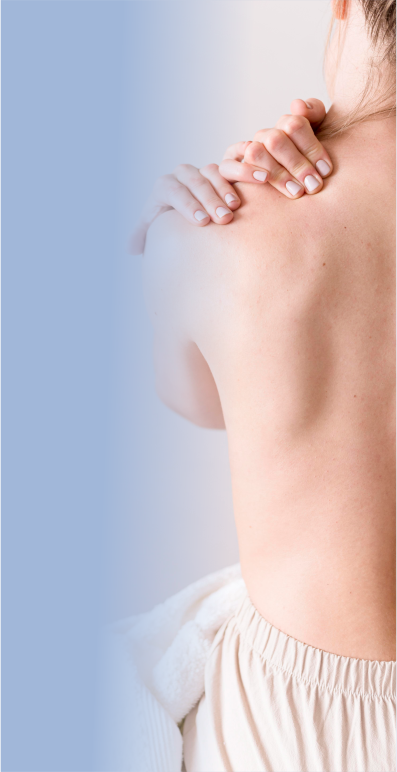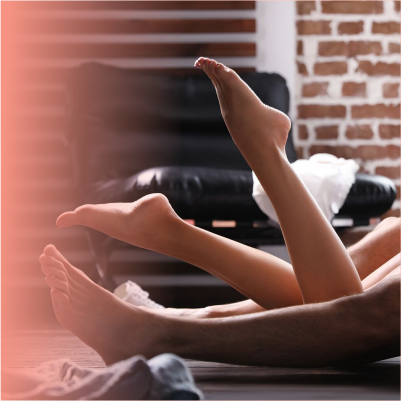Acne breakouts can occur anywhere on your skin, commonly on the face, neck, shoulders, back, and chest. Pores, small openings in the skin, can get clogged by oil, bacteria, dead skin cells, and dirt, resulting in pimples or blemishes. Repeated or frequent pimples may indicate acne, a common skin condition affecting about 9.4 percent of people worldwide. Although not a severe health risk, severe acne can be painful and lead to scarring. It can also cause emotional distress, affecting self-esteem and confidence. However, acne is treatable, with various effective treatments available to reduce pimples and minimize scarring.
Table of Contents:
- What are the different types of acne?
- What are the symptoms of acne?
- What causes acne?
- What are the risk factors for developing acne?
- Getting a diagnosis
- Treatment for acne
- Preventing acne
- The outlook for someone with acne
- Conclusion
What are the different types of acne?
Acne, though often lumped into one category, actually comes in various forms, each with its own characteristics and treatment approaches. Understanding the different types of acne is crucial for effective management and treatment. Here are some common types:
- Comedonal Acne: This type of acne is characterized by blackheads and whiteheads. Blackheads, or open comedones, occur when pores become clogged with oil and dead skin cells, causing them to appear dark. Whiteheads, or closed comedones, are similar but covered with a thin layer of skin, giving them a white or flesh-colored appearance.
- Inflammatory Acne: Inflammatory acne includes papules, pustules, nodules, and cysts. Papules are small, red bumps that may be tender to the touch. Pustules are similar but contain pus at their tips. Nodules are larger, solid, painful lumps beneath the surface of the skin. Cysts are the most severe form of acne, characterized by large, pus-filled lesions that can cause scarring.
- Hormonal Acne: Hormonal fluctuations, particularly during puberty, menstruation, pregnancy, and menopause, can contribute to the development of acne. Hormonal acne often appears as deep, cystic lesions along the jawline, chin, and neck.
- Acne Mechanica: This type of acne is caused by friction, pressure, or heat on the skin, often as a result of wearing tight clothing, hats, helmets, or carrying heavy backpacks. It typically manifests as small, red bumps and may be exacerbated by sweating.
- Acne Rosacea: Often mistaken for acne, rosacea is a chronic inflammatory skin condition that primarily affects the face, causing redness, visible blood vessels, and sometimes small, red bumps that resemble acne lesions.
Understanding the type of acne you have is essential for developing an effective treatment plan. While mild cases of acne may respond well to over-the-counter products containing ingredients like benzoyl peroxide or salicylic acid, moderate to severe acne may require prescription medications or professional interventions such as laser therapy or chemical peels. If you’re unsure about the type of acne you’re experiencing or how best to treat it, consult with a dermatologist for personalized advice and treatment options.
What are the symptoms of acne?
Acne manifests through a variety of symptoms, ranging from mild to severe. Recognizing these symptoms is essential for timely intervention and effective management. Here are some common signs and symptoms of acne:
- Non-Inflammatory Lesions:
- Blackheads (Open Comedones): Small, dark spots on the skin’s surface caused by clogged pores.
- Whiteheads (Closed Comedones): Similar to blackheads but covered by a thin layer of skin, appearing as small, white or flesh-colored bumps.
- Inflammatory Lesions:
- Papules: Small, red bumps on the skin that may feel tender or sore.
- Pustules: Red, inflamed bumps with a white or yellow center containing pus.
- Nodules: Large, solid, painful lumps beneath the skin’s surface.
- Cysts: Deep, pus-filled lesions that are often painful and may lead to scarring.
- Redness and Swelling: Inflamed acne lesions can cause the surrounding skin to appear red and swollen.
- Pain or Discomfort: Inflammatory acne lesions, such as papules, pustules, nodules, and cysts, can be tender or painful to the touch.
- Scarring: Severe or untreated acne lesions, particularly cysts, can lead to permanent scarring or skin discoloration.
- Increased Oiliness: Acne-prone skin tends to produce excess sebum, leading to an oily or shiny complexion.
- Occasional Breakouts: Acne symptoms may fluctuate, with periods of relative clarity followed by outbreaks of new lesions.
It’s important to note that acne can affect various parts of the body, including the face, neck, chest, back, and shoulders. While some individuals may experience mild symptoms that resolve with over-the-counter treatments, others may require prescription medications or professional interventions to manage their acne effectively.
If you’re experiencing persistent or severe acne symptoms, it’s advisable to consult with a dermatologist for personalized evaluation and treatment recommendations. Early intervention can help prevent complications such as scarring and improve the overall appearance and health of your skin.
What causes acne?
Acne is a multifactorial skin condition influenced by various internal and external factors. Understanding the underlying causes of acne is essential for effective management and prevention. Here are some common factors that contribute to the development of acne:
- Excess Sebum Production: Sebum is an oily substance produced by the sebaceous glands in the skin. When these glands produce too much sebum, it can mix with dead skin cells and clog pores, leading to the formation of acne lesions.
- Clogged Pores: The combination of excess sebum production and the accumulation of dead skin cells can result in the formation of comedones, including blackheads and whiteheads, which can serve as a breeding ground for acne-causing bacteria.
- Bacterial Overgrowth: Propionibacterium acnes (P. acnes) is a type of bacteria that naturally resides on the skin’s surface. When pores become clogged, P. acnes can proliferate within the follicle, triggering an inflammatory response and the formation of acne lesions.
- Hormonal Fluctuations: Hormonal changes, particularly during puberty, menstruation, pregnancy, and menopause, can influence sebum production and contribute to the development of acne. Androgens, such as testosterone, play a key role in stimulating sebaceous gland activity.
- Genetics: Genetic predisposition can increase an individual’s likelihood of developing acne. If one or both parents have a history of acne, their offspring may be more prone to experiencing acne as well.
- Dietary Factors: While the link between diet and acne is still being researched, certain dietary components, such as high-glycemic foods (e.g., sugary snacks, refined carbohydrates) and dairy products, have been implicated in exacerbating acne symptoms in some individuals.
- Stress: Chronic stress can trigger hormonal fluctuations and inflammation in the body, potentially worsening acne symptoms or causing new breakouts.
- Medications: Certain medications, such as corticosteroids, androgenic medications, and lithium, can exacerbate acne or trigger acne-like eruptions as a side effect.
- Cosmetic Products: Some cosmetics and skincare products contain ingredients that can clog pores or irritate the skin, leading to acne breakouts, particularly in individuals with sensitive or acne-prone skin.
- Environmental Factors: Exposure to pollutants, humidity, and certain occupational hazards (e.g., exposure to oils or grease) can contribute to the development or exacerbation of acne.
While acne can be influenced by a combination of factors, adopting a comprehensive approach to skincare, including gentle cleansing, exfoliation, and the use of non-comedogenic products, along with lifestyle modifications and, in some cases, medical interventions, can help manage and prevent acne effectively. If you’re struggling with persistent or severe acne, consulting with a dermatologist can provide personalized treatment recommendations tailored to your specific needs.
What are the risk factors for developing acne?
Several factors can increase the risk of developing acne. Understanding these risk factors can help individuals take proactive steps to manage their skin health effectively. Here are some common risk factors associated with acne:
- Hormonal Changes: Fluctuations in hormone levels, particularly during puberty, menstruation, pregnancy, and menopause, can increase the likelihood of developing acne. Androgens, such as testosterone, play a key role in stimulating sebum production, which can contribute to acne formation.
- Genetics: Family history can significantly influence an individual’s predisposition to acne. If one or both parents have a history of acne, their offspring are more likely to experience acne as well.
- Age: Acne is most common during adolescence, as hormonal changes during puberty can lead to increased sebum production and clogged pores. However, acne can affect individuals of all ages, including adults.
- Gender: While acne affects both males and females, males tend to experience more severe and persistent forms of acne. Hormonal fluctuations, particularly androgen levels, may contribute to this gender difference.
- Certain Medications: Some medications can exacerbate acne or trigger acne-like eruptions as a side effect. Examples include corticosteroids, androgenic medications, lithium, and certain antiepileptic drugs.
- Cosmetic and Skincare Products: Certain cosmetics and skincare products contain ingredients that can clog pores or irritate the skin, leading to acne breakouts, particularly in individuals with sensitive or acne-prone skin. It’s essential to choose non-comedogenic or oil-free products and avoid pore-clogging ingredients.
- Dietary Factors: While the relationship between diet and acne is still under investigation, some studies suggest that high-glycemic foods (e.g., sugary snacks, refined carbohydrates) and dairy products may exacerbate acne symptoms in some individuals.
- Stress: Chronic stress can trigger hormonal imbalances and inflammation in the body, potentially worsening acne symptoms or causing new breakouts.
- Environmental Factors: Exposure to pollutants, humidity, and certain occupational hazards (e.g., exposure to oils or grease) can contribute to the development or exacerbation of acne.
- Skin Type: Individuals with oily or combination skin types are more prone to developing acne due to increased sebum production and a greater likelihood of pore clogging.
While these risk factors can increase the likelihood of developing acne, it’s important to note that acne is a complex condition influenced by multiple factors, and individual experiences may vary. Adopting a comprehensive approach to skincare, including gentle cleansing, regular exfoliation, and the use of non-comedogenic products, along with lifestyle modifications and, if necessary, medical interventions, can help manage acne effectively. If you’re struggling with persistent or severe acne, consulting with a dermatologist can provide personalized treatment recommendations tailored to your specific needs.
Getting a diagnosis
Getting an accurate diagnosis is crucial for effective acne management. While acne is a common skin condition, its severity and underlying causes can vary significantly among individuals. Here’s what you can expect during the diagnostic process:
- Medical History: Your healthcare provider will begin by taking a thorough medical history, including information about your symptoms, previous treatments, family history of acne, and any other relevant medical conditions or medications you may be taking.
- Physical Examination: A visual examination of your skin will be conducted to assess the type, severity, and distribution of acne lesions. Your healthcare provider may also examine other areas of your body, such as your chest, back, and shoulders, as acne can occur in these areas as well.
- Classification of Acne: Based on the appearance and characteristics of your acne lesions, your healthcare provider may classify your acne into one of several categories, such as comedonal acne, inflammatory acne, hormonal acne, or acne rosacea. This classification helps guide treatment decisions.
- Differential Diagnosis: In some cases, other skin conditions may mimic the appearance of acne. Your healthcare provider may perform a differential diagnosis to rule out other conditions, such as rosacea, folliculitis, or perioral dermatitis.
- Laboratory Tests: While most cases of acne can be diagnosed based on a physical examination and medical history, additional laboratory tests may be ordered in certain situations. For example, hormone levels may be evaluated in cases of suspected hormonal acne, or bacterial cultures may be performed if there are signs of a secondary bacterial infection.
- Patient Education: Your healthcare provider will take the time to educate you about acne, including its causes, triggers, and treatment options. They may also provide guidance on proper skincare practices and lifestyle modifications to help manage your acne effectively.
- Treatment Plan: Based on your diagnosis and individual needs, your healthcare provider will develop a personalized treatment plan tailored to your specific type and severity of acne. This may include topical or oral medications, lifestyle modifications, and professional treatments such as chemical peels or laser therapy.
- Follow-Up: Regular follow-up appointments may be scheduled to monitor your progress, adjust your treatment plan as needed, and address any concerns or questions you may have.
It’s essential to be proactive about seeking medical attention if you’re experiencing persistent or severe acne symptoms. A dermatologist or healthcare provider specializing in skin conditions can provide the expertise and guidance needed to effectively manage your acne and improve the health and appearance of your skin.
Treatment for acne
Treatment for acne depends on the type, severity, and underlying causes of the condition. Here are some common treatment options that may be recommended by healthcare providers or dermatologists:
- Topical Treatments:
- Benzoyl Peroxide: Available over-the-counter or as a prescription, benzoyl peroxide helps to kill acne-causing bacteria, reduce inflammation, and unclog pores.
- Topical Retinoids: Prescription-strength retinoids, such as tretinoin, adapalene, and tazarotene, help to unclog pores, normalize skin cell turnover, and reduce the formation of comedones.
- Topical Antibiotics: Antibiotics, such as clindamycin and erythromycin, can be applied topically to reduce acne-causing bacteria and inflammation.
- Azelaic Acid: Azelaic acid is a naturally occurring acid that helps to unclog pores, reduce inflammation, and fade post-inflammatory hyperpigmentation.
- Oral Medications:
- Oral Antibiotics: Antibiotics, such as doxycycline, minocycline, and tetracycline, may be prescribed for moderate to severe acne to reduce inflammation and bacterial growth.
- Oral Contraceptives: For females with hormonal acne, certain birth control pills containing estrogen and progestin can help regulate hormone levels and improve acne symptoms.
- Isotretinoin (Accutane): Isotretinoin is a potent oral medication reserved for severe, treatment-resistant acne. It works by reducing sebum production, shrinking oil glands, and preventing the formation of acne lesions. Isotretinoin requires close monitoring due to potential side effects and requires strict adherence to a comprehensive risk management program.
- Professional Treatments:
- Chemical Peels: Chemical peels, such as glycolic acid or salicylic acid peels, can help to exfoliate the skin, unclog pores, and improve acne symptoms.
- Laser Therapy: Laser and light-based therapies, such as intense pulsed light (IPL) or photodynamic therapy (PDT), can target acne-causing bacteria, reduce inflammation, and promote skin healing.
- Microdermabrasion: Microdermabrasion uses a handheld device to exfoliate the outer layer of the skin, helping to unclog pores and improve the appearance of acne scars and hyperpigmentation.
- Lifestyle Modifications:
- Gentle Cleansing: Use a mild, non-comedogenic cleanser to wash your face twice daily to remove excess oil, dirt, and impurities without stripping the skin.
- Avoid Picking or Squeezing: Resist the urge to pick, squeeze, or pop acne lesions, as this can worsen inflammation, increase the risk of scarring, and spread bacteria.
- Moisturize: Use a lightweight, non-comedogenic moisturizer to keep the skin hydrated without clogging pores.
- Sun Protection: Use a broad-spectrum sunscreen with SPF 30 or higher daily to protect your skin from harmful UV rays, which can worsen acne scarring and hyperpigmentation.
- Complementary Therapies:
- Tea Tree Oil: Some research suggests that tea tree oil, when applied topically, may help reduce acne lesions due to its antibacterial and anti-inflammatory properties.
- Zinc Supplements: Zinc supplements may help reduce acne inflammation and support overall skin health, although more research is needed to confirm their effectiveness.
It’s essential to consult with a dermatologist or healthcare provider to determine the most appropriate treatment plan for your specific type and severity of acne. They can provide personalized recommendations based on your individual needs, medical history, and treatment goals. Consistency and patience are key when treating acne, as it may take several weeks to months to see significant improvement.
What’s the outlook for someone with acne?
The outlook for individuals with acne varies depending on factors such as the type, severity, and underlying causes of the condition, as well as the effectiveness of treatment and adherence to skincare recommendations. Here are some key points to consider regarding the outlook for acne:
- Mild Acne: Many cases of mild acne can be effectively managed with over-the-counter treatments, proper skincare practices, and lifestyle modifications. With consistent treatment and patience, mild acne lesions such as blackheads, whiteheads, and small papules may improve or resolve completely over time.
- Moderate to Severe Acne: Moderate to severe acne may require more aggressive treatment approaches, including prescription medications, professional interventions, and lifestyle modifications. While it may take longer to see improvement, comprehensive treatment can help reduce inflammation, minimize acne lesions, and prevent scarring.
- Hormonal Acne: Hormonal acne, particularly in females, may fluctuate with hormonal changes during puberty, menstruation, pregnancy, and menopause. However, with appropriate hormonal management, such as oral contraceptives or other hormone-regulating medications, hormonal acne can often be effectively controlled.
- Scarring and Hyperpigmentation: Severe or untreated acne lesions, particularly cysts and nodules, can lead to scarring and post-inflammatory hyperpigmentation. While these effects can be challenging to treat, various professional treatments, such as laser therapy, chemical peels, and microneedling, can help improve the appearance of acne scars and hyperpigmentation.
- Psychological Impact: Acne can have a significant psychological and emotional impact, affecting self-esteem, body image, and quality of life. It’s essential for individuals with acne to seek support from healthcare providers, counselors, or support groups to address any emotional distress associated with their condition.
- Long-Term Management: Acne is a chronic condition for many individuals, meaning that ongoing management and maintenance are often necessary to prevent recurrence and maintain clear skin. This may involve continued use of topical treatments, periodic professional interventions, and adherence to a consistent skincare routine.
- Individual Variability: It’s important to recognize that everyone’s experience with acne is unique, and the effectiveness of treatment can vary from person to person. Some individuals may achieve clear skin with relatively simple interventions, while others may require more extensive and prolonged treatment.
Overall, while acne can be a challenging condition to manage, the outlook is generally positive with the right combination of treatments, patience, and perseverance. Seeking guidance from a dermatologist or healthcare provider can provide personalized recommendations and support to help individuals achieve clearer, healthier skin and improve their overall well-being.
Preventing acne
Preventing acne involves adopting a comprehensive approach that addresses various contributing factors, including excess oil production, clogged pores, bacteria, inflammation, hormonal fluctuations, and lifestyle habits. Here are some effective strategies for preventing acne:
- Maintain a Consistent Skincare Routine:
- Cleanse your skin twice daily with a gentle, non-comedogenic cleanser to remove dirt, oil, and impurities without stripping the skin.
- Use lukewarm water and avoid harsh scrubbing, which can irritate the skin and worsen acne.
- After cleansing, apply a lightweight, non-comedogenic moisturizer to keep the skin hydrated and balanced.
- Avoid Pore-Clogging Products:
- Choose skincare and cosmetic products labeled as non-comedogenic, oil-free, or water-based to minimize the risk of pore clogging.
- Avoid heavy, greasy moisturizers, sunscreen, and makeup, as these can exacerbate acne breakouts.
- Practice Good Hygiene Habits:
- Avoid touching your face with unwashed hands, as this can transfer bacteria and exacerbate acne.
- Wash your hair regularly and keep it away from your face, as oils and styling products can contribute to acne along the hairline and forehead.
- Manage Stress Levels:
- Chronic stress can trigger hormonal fluctuations and inflammation, which can worsen acne symptoms. Practice stress-reduction techniques such as mindfulness, meditation, deep breathing exercises, or yoga.
- Engage in regular physical activity, which can help reduce stress levels and improve overall well-being.
- Adopt a Balanced Diet:
- Eat a well-balanced diet rich in fruits, vegetables, whole grains, and lean proteins.
- Limit consumption of high-glycemic foods, sugary snacks, and processed foods, as these can contribute to acne by increasing insulin levels and inflammation.
- Some individuals may find that certain dietary factors, such as dairy products or foods high in iodine, exacerbate their acne symptoms. Pay attention to your body’s response to different foods and make adjustments as needed.
- Stay Hydrated:
- Drink plenty of water throughout the day to keep your skin hydrated and help flush out toxins.
- Limit consumption of sugary beverages and caffeinated drinks, which can dehydrate the skin and potentially worsen acne.
- Protect Your Skin from Sun Exposure:
- Use a broad-spectrum sunscreen with SPF 30 or higher daily to protect your skin from harmful UV rays.
- Choose oil-free or non-comedogenic sunscreen formulations to avoid clogging pores.
- Avoid Smoking and Limit Alcohol Consumption:
- Smoking and excessive alcohol consumption can impair skin health and exacerbate acne. Quit smoking and drink alcohol in moderation, if at all.
- Seek Professional Advice:
- If over-the-counter treatments are not effective in preventing acne or if you experience severe or persistent breakouts, consult with a dermatologist for personalized evaluation and treatment recommendations.
By incorporating these preventive measures into your daily routine and making healthy lifestyle choices, you can help minimize the risk of acne breakouts and maintain clearer, healthier skin over time.
The bottom line
Acne is a common skin condition that can affect individuals of all ages and backgrounds. While it can be frustrating to deal with, especially when breakouts occur, there are effective strategies for managing and preventing acne. Here’s the bottom line:
- Understanding Your Skin: Recognize that acne is a complex condition influenced by various factors, including genetics, hormones, lifestyle habits, and skincare practices. By understanding your skin type and acne triggers, you can tailor your approach to prevention and treatment accordingly.
- Comprehensive Skincare Routine: Adopting a consistent skincare routine that includes gentle cleansing, moisturizing, and the use of non-comedogenic products can help keep your skin balanced and less prone to breakouts.
- Lifestyle Modifications: Making healthy lifestyle choices, such as eating a balanced diet, managing stress, staying hydrated, and avoiding smoking and excessive alcohol consumption, can support overall skin health and reduce the risk of acne.
- Professional Guidance: If over-the-counter treatments are not effective or if you’re experiencing severe or persistent acne, don’t hesitate to seek professional advice from a dermatologist. They can provide personalized evaluation, treatment recommendations, and ongoing support to help you achieve clearer, healthier skin.
- Patience and Persistence: Treating and preventing acne is often a gradual process that requires patience and consistency. Stick to your skincare routine, follow your dermatologist’s recommendations, and give your treatments time to work.
By taking a proactive approach to skincare, staying informed about acne prevention strategies, and seeking professional guidance when needed, you can effectively manage acne and maintain clearer, healthier skin in the long run. Remember that everyone’s skin is unique, so what works for one person may not work for another. Stay patient, stay consistent, and prioritize your skin health for a brighter, acne-free future.







